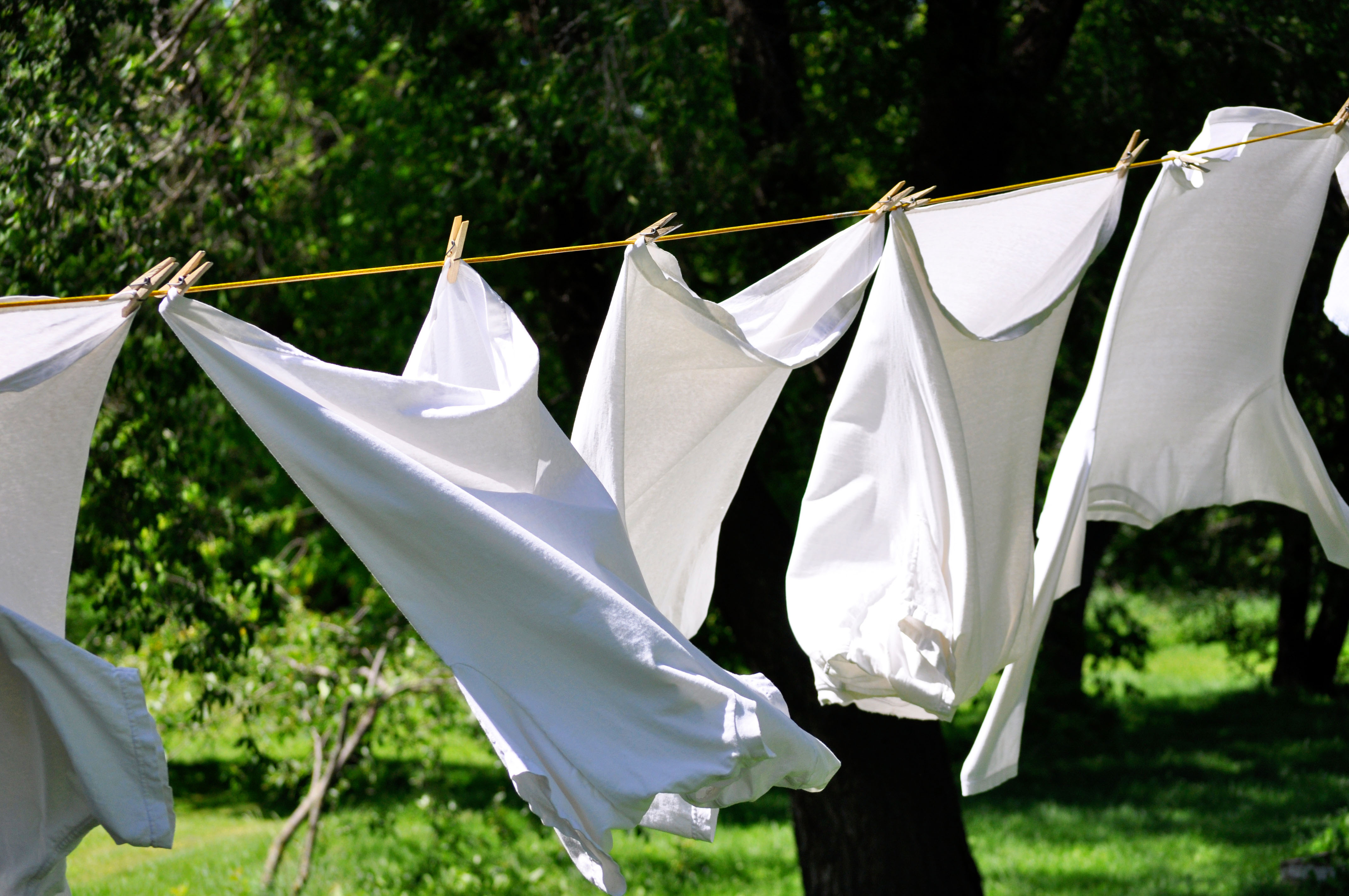Do you wash whites in hot or cold water?
Bright whites is the ultimate laundry goal, but to achieve it, do you wash whites in hot or cold water? Here’s our expert advice

Keeping whites white is something we all want to achieve with our laundry, but do you wash whites in hot or cold water in order to retain their original color?
As a general rule, higher temperatures are the most effective at removing dirt and stains, so if it’s bright whites you’re after, hot water is a good bet. However, that doesn’t mean you go straight in for the hottest cycle setting – there are other things to consider, too.
While your laundry room ideas will create a space that’s stylish and functional, washing savvy is also a prerequisite to keep fabrics looking and feeling as good as new so here we’ve put together a guide to the temperature that’s right for washing whites.
Do you wash whites in hot or cold water?
‘What temperature you decide to wash your whites should be dictated by several things; mainly the material they’re made of – whether white or not, certain fabrics do not do well in heat – as well as the level and type of stain they’ve suffered,’ say the cleaning experts at Essential Living.
Washing standard white loads in hot water every time isn’t the most eco-friendly decision – or the most cost-effective, for that matter. With that in mind, it’s worth taking a little time to understand the best heat setting for your needs – for your sake, your clothes, and the environment, too. This is the lowdown.
Start by reading the garment care label
Regardless of how stained your whites are, it’s important to check out the laundry symbols on the garment’s care label and stick to the recommended water temperature and washing cycle.
‘Polyester blends are best washed using warm water, while cotton can tolerate hot water, for example’, says WeThrift’s homes expert, Nick Drewe. Make a note of any specific instructions and alter the temperature setting on your washing machine accordingly.
Design expertise in your inbox – from inspiring decorating ideas and beautiful celebrity homes to practical gardening advice and shopping round-ups.
When to wash whites in hot water
Having hotter cycles (130ºF (50ºC) and above) as your default washing machine setting is not necessary for your usual day-to-day laundering. Save on energy bills – and decrease your carbon footprint – by reserving them only for heavily stained items (assuming the fabric can take the heat). Consider making these washes shorter than usual to reduce your energy expenditure even further.
High temperatures kill bacteria, so hot washes are always the best option if someone in the household is poorly, though.
When to wash whites in cold water
Cold water cycles (between 60 and 80ºF (15 and 30ºF) cause the least amount of damage to fabrics, so it’s a good idea to wash garments (white or not) you’re unsure about in cooler temperatures to avoid disappointment when you pull your clothes out of the drum. If you’re not satisfied with the results, you can always try a slightly warmer setting next time.
‘Delicate whites always require a cool wash (no more than 80ºF (30ºC)) on a delicate or hand-wash cycle,’ says Sally Hughes, founder of luxury laundry care brand, Kair.
When washing whites in cooler temperatures, change your machine setting to a gentle wash and use a specially formulated cold-water detergent to ensure a deep, thorough clean.
If you’re washing at cooler temperatures on a regular basis, it’s worth heeding this caution from Sophie Lane at Miele. ‘Washing at low temperatures for long periods of time can result in bacteria and odors building up in a washing machine,’ she says. ‘Over time, this buildup can cause whites to go gray and dull.’ To prevent this Sophie recommends cleaning a washing machine regularly.
How to wash whites in a washing machine
Hot water cycles are often the default setting on our washing machines, with most people never bothering to change them. However, based on the above, it’s safe to say this is a mistake. For a standard white wash (ie lightly stained, nothing too set-in), take the time to check your garment care labels. Separate them based on the temperatures required and change your washing machine settings accordingly.
‘I suggest using the warmest water recommended for the fabric – this will help lift dirt and grime which might otherwise dull fabric over time, while minimizing the risk of shrinkage’, says Sally Hughes.
When a hot wash is required, such as for heavily stained items, Sally recommends changing the cycle setting. ‘Most modern machines will have setting options such as heavy duty or whitest whites which can be used depending on the severity of the staining,’ she says.
Pre-treat stains with the correct water temperature
Whether it’s coffee, red wine, chocolate or mud, white clothing does not take kindly to tough stains. Thankfully, practically any stain can be removed with a little extra TLC. Depending on what the stain is, different pretreatment strategies might be required, often involving different water temperatures, so it’s important to know what you’re dealing with.
Pretreating tough stains with a specialized stain remover then washing according to the garment care label is fine, but there are exceptions. ‘Red wine, chocolate and coffee, for example, can set in further if washed in warm or hot temperatures, so it’s safer to presoak them in cold water first,’ say the cleaning experts at Essential Living.
Do whites have to be washed in hot water?
It’s long been assumed that washing whites in hot water is the only way to ensure bright whites – housekeepers used to boil garments and linens in big pots for hours to get the stains out. These days, that’s just not the case. While there’s a time and a place for hot water washes (more on that in a minute), improvements in washing machines and laundry detergents mean lukewarm water (between 90 and 110ºF (30 and 40ºC)) is perfectly adequate for regular, day-to-day white laundering.
Does washing whites in hot water make them whiter?
While it remains an efficient way of keeping whites bright, regularly washing clothes in hot water comes with its own set of problems – not only can it cause damage to your clothes, but it’s not great for your energy bills or the environment.
Luckily, nowadays, washing whites in hot water isn’t the only way to keep them looking their best. Using a specially formulated cold-water detergent, combined with the right settings on your washing machine, means washing your whites in cooler temperatures can keep them looking fresh and bright.

For 10 years, Tara King worked as a Content Editor in the magazine industry, before leaving to become freelance, covering interior design, wellbeing, craft and homemaking. As well as writing for Ideal Home, Style at Home, Country Homes & Interiors, Tara’s keen eye for styling combined with a passion for creating a happy – and functional – family home has led to a series of organization and cleaning features for H&G.
